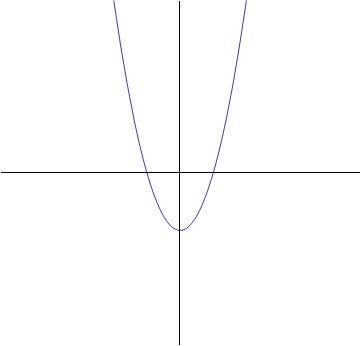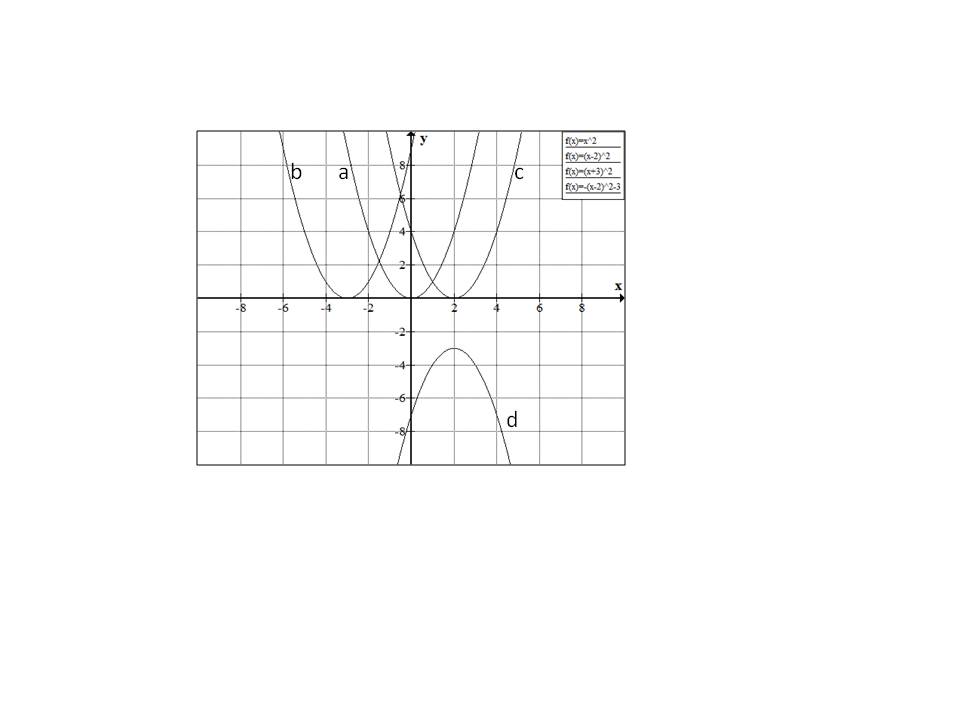All Algebra 1 Resources
Example Questions
Example Question #1 : How To Graph An Exponential Function
Example Question #1 : How To Graph A Two Step Inequality
Which graph depicts the following inequality?

No real solution.




Let's put the inequality in slope-intercept form to make it easier to graph:
The inequality is now in slope-intercept form. Graph a line with slope 

Because the inequality sign is greater than or equal to, a solid line should be used.
Next, test a point. The origin 
The statement is false. Therefore, the section of the graph that does not contain the origin should be shaded.
Example Question #1 : How To Graph A Quadratic Function
What is the minimum possible value of the expression below?
The expression has no minimum value.
We can determine the lowest possible value of the expression by finding the 

The vertex of the parabola 

The parabola is concave upward (its quadratic coefficient is positive), so 

Example Question #2 : Graphing Parabolas
What is the vertex of the function 





The equation of a parabola can be written in vertex form: 
The point 


In this example, 
Example Question #582 : Functions And Graphs
Which of the graphs best represents the following function?

None of these




The highest exponent of the variable term is two (
The graph below will be the answer, as it shows a parabolic curve.

Example Question #1 : How To Graph A Quadratic Function
What is the equation of a parabola with vertex 


From the vertex, we know that the equation of the parabola will take the form 

To calculate that 


Now the equation is 
Expand the squared term:
Distribute the fraction through the parentheses:
Combine like terms:
Example Question #584 : Functions And Graphs












None of the above


Starting with



Similarly 

Hence the correct answer is option 
Example Question #1 : Graphing Parabolas
Which of the following graphs matches the function 






Start by visualizing the graph associated with the function :

Terms within the parentheses associated with the squared x-variable will shift the parabola horizontally, while terms outside of the parentheses will shift the parabola vertically. In the provided equation, 2 is located outside of the parentheses and is subtracted from the terms located within the parentheses; therefore, the parabola in the graph will shift down by 2 units. A simplified graph of looks like this:

Remember that there is also a term within the parentheses. Within the parentheses, 1 is subtracted from the x-variable; thus, the parabola in the graph will shift to the right by 1 unit. As a result, the following graph matches the given function :

Example Question #42 : Functions And Lines

Which of these would most likely be the equation corresponding to the above graph?
This is an absolute value graph. Its equation takes the form 


Since the graph of 


or
Example Question #1 : How To Graph An Absolute Value Function
Give the 
The graph has no 
To find the 


Rewrite this as the compound equation:

Solve each separately:
There are two 
All Algebra 1 Resources















































































